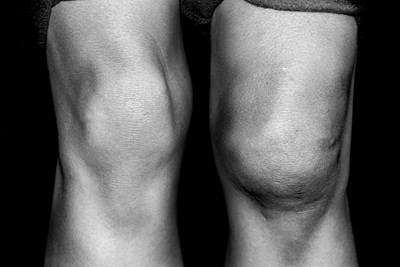When your knee has been damaged by arthritis or a severe knee injury, you may need a knee replacement, also called arthroplasty. Your surgeon uses plastic and metal parts to cap the ends of the bones that form your knee joint, including your kneecap. Here is a look at the risks and complications involved with knee replacement surgery.
What does the procedure involve?
A knee replacement surgery involves replacing only the surface of your bones. There are four main parts of a procedure.
- Preparing the bone: The damaged cartilage at the ends of the femur (thigh bone) and tibia (shin bone) are removed. In addition to this, a small amount of underlying bone is also removed.
- Positioning the metal implants: Once the cartilage and bone have been removed, they are replaced with metal components that reconstruct the surface of your joint. These metal parts are cemented or "press-fit" into your bone.
- Resurfacing the patella: The underside of the patella (kneecap) is cut and resurfaced with a plastic button.
- Inserting a spacer: A smooth gliding surface is created with the insertion of a medical-grade plastic spacer between the metal components.
Risks and Complications
Complications following total knee replacement are uncommon. For example, serious complications, such as infection in your knee joint, occur in fewer than 2% of knee replacement patients. Major complications, such as heart attack, are even rarer. However, if you have a chronic illness you have a higher risk for complication. When complications do occur, they can interfere with a full recovery.
Possible complications from knee replacement surgery include:
- Blood clots: One of the most common complications of knee replacement surgery is a blood clot in the affected leg's vein. A blood clot can be life-threatening when it breaks free and travels to your lungs. Your surgeon will instruct you on how to prevent blood clots from forming. This may include elevating your legs, lower-leg exercises to increase circulation, wearing support stockings, and taking prescribed blood thinners.
- Infection: An infection can develop in the wound or tissue around the prosthesis while you are in the hospital or after you have returned home. There is a possibility that it can even occur years later. Minor infections in the wound are treated with antibiotics, while major infections require additional surgery and removal of the prosthesis. If you have an infection in your body, it can spread to your joint replacement.
- Implant problems: Implant surfaces can wear down and parts of the implant may loosen. Motion can also sometimes be restricted due to scarring of the knee, especially in people with limited motion prior to knee replacement surgery.
- Persistent pain: Though this complication is rare, a small percentage of people continue to experience pain following a knee replacement procedure. The majority of patients, however, experience pain relief after surgery.
- Neurovascular injury: This complication is also rare, but injury to your nerves or blood vessels surrounding the knee can occur during a knee replacement surgery.



